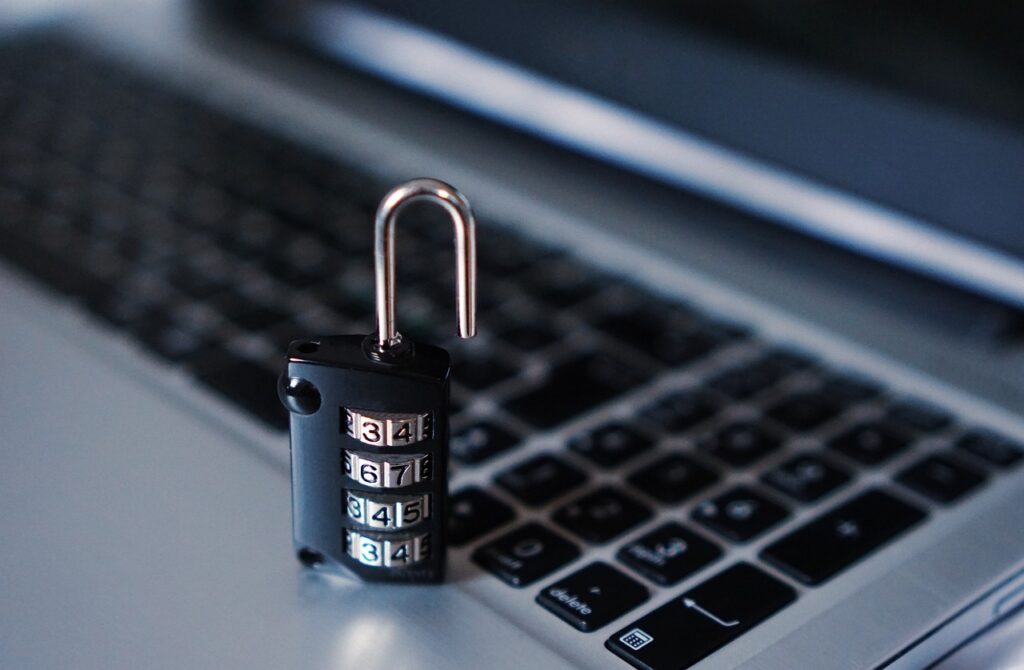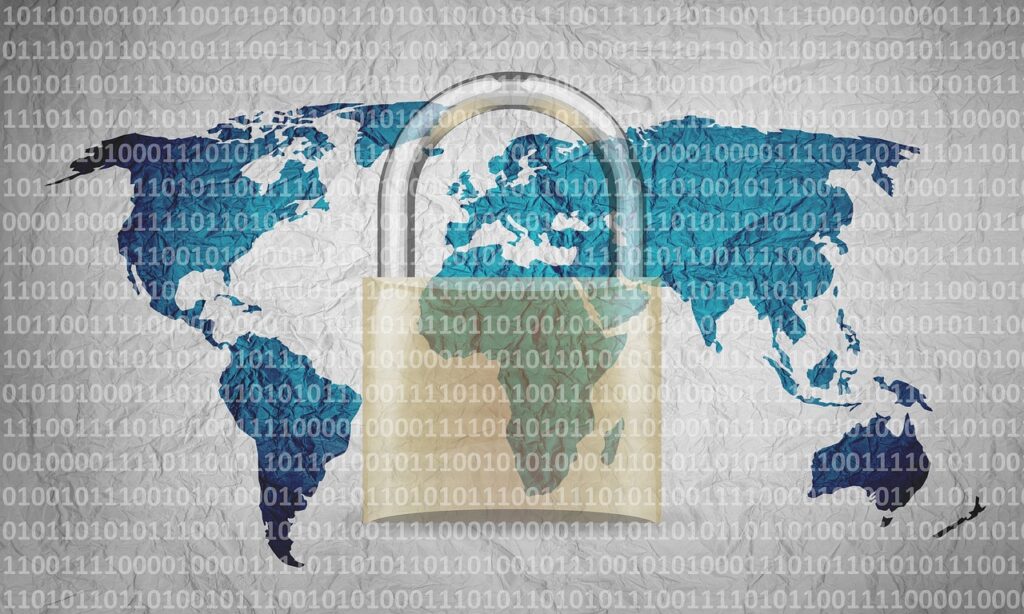In recent years, cybersecurity has become one of the most discussed topics around the world. With cyberattacks and digital crimes on the rise , understanding how to protect ourselves and prepare for what’s to come is more crucial than ever. In this article, we’ll cover the types of cyberattacks , their impacts, best practices for data protection, and the importance of training qualified professionals in the area of information technology .
What Are Cyber Attacks?
A cyberattack is any attempt to steal, damage, or exploit information on a computer system or network. Attacks can range from simple phishing attempts to complex infiltrations of government systems. In 2023, the World Economic Forum ranked cyberattacks as one of the top five global risks , alongside climate and economic crises.
The Current Cybersecurity Landscape
The Evolution of Cyber Attacks
In recent years, the nature of cyberattacks has evolved dramatically. In the past, hackers were often motivated by curiosity or fame, but now many attackers are organized and have clear financial motives. Criminal organizations have access to sophisticated tools that make it easier to carry out large-scale attacks. In addition, the pandemic has accelerated digitalization in many industries, increasing the attack surface and providing new opportunities for hackers to exploit.
Top Trends in Cyber Attacks
1. Ransomware Attacks
Ransomware attacks continue to be one of the biggest threats. With the rise of digitalization, data has become a valuable asset. Hackers hijack essential data and demand a ransom for its release. In many cases, companies prefer to pay the ransom to avoid losing critical data.
The US Cybersecurity and Infrastructure Security Agency ( CISA ) reported that ransomware attacks increased in 2023, with organizations being targeted in attacks demanding ransoms ranging from thousands to millions of dollars.
2. Social Engineering Attacks
Social engineering attacks involve manipulating individuals into revealing sensitive information. Attackers may pose as trustworthy individuals or use fake news to create a sense of urgency. These types of attacks are often more effective than technical attacks because they exploit human psychology.
A famous example is the CEO attack, where a hacker impersonates a high-level executive and requests fund transfers. This highlights the importance of implementing verification policies before conducting financial transactions.
3. Exploiting Vulnerabilities
As businesses adopt new technologies, new vulnerabilities emerge. Hackers exploit flaws in software, operating systems, and applications to gain unauthorized access. Zero-day vulnerabilities are a growing concern because they refer to flaws that are unknown to developers and therefore have no available patches.
The US Computer Emergency Response Team (US-CERT) frequently issues advisories about critical vulnerabilities, advising organizations to apply patches immediately.
Common Types of Cyber Attacks
1. Phishing
Phishing is a technique in which hackers attempt to trick individuals into revealing sensitive information, such as passwords and financial data. This is typically done through fraudulent emails or messages that appear legitimate.
How to Recognize Phishing?
- Suspicious Emails : Check if the email address is genuine. Look out for small typos that may indicate the email is not authentic.
- Strange Links : Hover over links before clicking to check the URL. Shortened links are often used in phishing attempts.
- Urgency : Messages that create a sense of urgency are often phishing attempts . Example: “Your account will be terminated in 24 hours, click here to avoid.”
2. Ransomware
Ransomware is a type of malicious software that hijacks a victim’s data and demands payment to release it. Famous cases such as the WannaCry attack demonstrate the severity of this type of attack.
How to Protect Yourself Against Ransomware?
- Regular Backup : Keep backup copies of your data in safe locations. Consider using the 3-2-1 Rule : three copies of the data, in two different formats, with one copy stored off-site.
- Software Updates : Keep your systems and applications up to date. Attackers often exploit vulnerabilities in outdated software.
- Education : Train employees on the dangers of ransomware and how to avoid it. Phishing simulations can help prepare your team.
3. DDoS (Distributed Denial of Service Attack)
DDoS attacks aim to overload a server, making it inaccessible. Many large companies and even governments have fallen victim to this type of attack, resulting in significant financial losses.
How to Prevent DDoS Attacks?
- Mitigation Solutions : Use DDoS mitigation services to protect your network. These services can filter malicious traffic before it reaches your servers.
- Redundancy : Build redundancies into your infrastructure to minimize the impact of an attack. This may include having servers in different geographic locations.
- Traffic Monitoring : Use monitoring tools to identify anomalous patterns in network traffic.
4. Malware
Malware is a generic term that encompasses any software designed to cause harm. This includes viruses, worms, and Trojans. Hackers can use malware to steal information, damage systems, or gain unauthorized access.
How to Protect Your System from Malware?
- Antivirus and Antimalware : Use up-to-date security software. Tools like Norton , McAfee , and Bitdefender are examples of reliable solutions.
- Be Careful with Downloads : Avoid downloading files from untrusted sources. Many types of malware are spread through disguised downloads.
5. Ataques de Man-in-the-Middle
These attacks occur when a hacker intercepts communication between two parties. This can allow the attacker to steal data or alter the communication.
Preventing Man-in-the-Middle Attacks
- Encryption : Use secure protocols like HTTPS to ensure communication is encrypted.
- VPNs : Use a virtual private network to secure communications, especially when using public Wi-Fi networks.
- Authentication : Implement two-factor authentication to increase security in online transactions.
The Impact of Cyber Attacks
In the Private Sector
The consequences of a cyberattack in the private sector can be devastating. The loss of customer data, disruption of operations and negative impact on a company’s reputation can be fatal to its survival.
Impact Examples
- Lost Revenue : Businesses can lose millions in revenue due to disruptions. The ransomware attack on Colonial Pipeline in 2021 resulted in the shutdown of one of the US’s major fuel sources, causing a sharp increase in fuel prices.
- Brand Damage : A company’s reputation can suffer irreparable damage. For example, the Yahoo hack that exposed data from billions of accounts resulted in a significant drop in consumer trust.
- Legal Consequences : Companies may face lawsuits due to security breaches. The LGPD (General Data Protection Law) in Brazil imposes severe sanctions on organizations that fail to adequately protect user data.
In the Public Sector
In government sectors, the risks are even more serious. A successful attack could compromise national security and put the lives of thousands of citizens at risk. It is a challenge that requires a rapid and coordinated response.
Examples of Attacks on the Public Sector
- Critical Infrastructure Attacks : Hackers may attempt to compromise essential services, such as electricity or water. One example is the 2020 attack on the Baltimore Water System , which demanded millions in payments and caused significant disruptions.
- Sensitive Data Theft : Citizens’ personal data can be exposed, causing irreparable damage. The 2015 hack of the U.S. Office of Personnel Management resulted in the data of millions of federal employees being leaked.
Economic Consequences
Cyberattacks have a significant economic impact. A study by Cybersecurity Ventures estimates that the global cost of cybercrime will reach $10.5 trillion annually by 2025. This includes direct and indirect costs such as lost revenue, system recovery , and reputational damage.
Additionally, many companies face rising compliance costs to meet security regulations. This can lead to a decrease in the ability to invest in innovation and growth.
The Importance of Cybersecurity Training
The Need for Qualified Professionals
As cyberattacks become more sophisticated, the demand for skilled cybersecurity professionals continues to grow. Cybersecurity is no longer an option, but a critical necessity for businesses of all sizes .
Job Prospects
Cybersecurity professionals can find opportunities in a variety of industries, including technology, healthcare, finance, and government. Furthermore, projections indicate that the demand for cybersecurity specialists will continue to increase, creating a favorable work environment.
CLICK HERE AND PREPARE FOR THE FUTURE NOW
Attractive Salaries
Salaries for cybersecurity professionals are often higher than the IT industry average . According to the Bureau of Labor Statistics , the average salary for a cybersecurity professional in the US is significantly higher than the average salary for other IT fields.
Training and Certifications
Training Options
There are several training options available for those who wish to specialize in cybersecurity :
- Technical Courses : Institutions offer technical programs that cover the fundamentals of cybersecurity , such as protecting networks and systems.
- Undergraduate and Postgraduate Degrees : Many universities offer undergraduate and postgraduate degrees focused on cybersecurity , preparing students for the challenges of the sector.
- Online Courses : Platforms like Coursera , edX , and Udemy offer a variety of online courses, allowing professionals to learn at their own pace.
Recognized Certifications
In addition to academic training, several certifications are highly valued in the sector:
- CISSP (Certified Information Systems Security Professional) : One of the most respected certifications in the field, recognized worldwide.
- CEH (Certified Ethical Hacker) : Focuses on teaching ethical hacking techniques to help defend against attacks.
- CISA (Certified Information Systems Auditor) : Important for professionals who want to audit and control information systems.
Continuous Development
The field of cybersecurity is always evolving. Therefore, continuous development is crucial. Professionals must stay up to date with the latest trends and technologies. Attending conferences, webinars, and workshops can be a great way to expand your knowledge and network.
The Role of Universities and Educational Institutions
Universities and educational institutions also play a vital role in training cybersecurity professionals . They should regularly update their curricula to include the latest trends and technologies in the field. Collaboration between industry and educational institutions can help shape programs that meet market needs.
CLICK HERE AND PREPARE FOR THE FUTURE NOW
Partnerships with Companies
Partnering with technology companies can provide internships and hands-on learning opportunities for students. This is essential to preparing them for the job market and ensuring they have the skills they need to face real-world challenges.
The Role of Technology in Cybersecurity
Artificial intelligence
Artificial intelligence (AI) plays a significant role in modern cybersecurity. With the ability to analyze large volumes of data, AI can help identify patterns of behavior that may indicate an attack.
Proactive Detection
AI tools can be used to detect suspicious activity in real time, allowing security teams to respond quickly. This is especially useful in situations where speed of response is critical.
Machine Learning
Machine learning technology can improve anomaly detection in security systems. Through algorithms that learn over time, systems can identify normal patterns and alert to behaviors that deviate from those patterns.
Blockchain
Blockchain technology is beginning to be explored in cybersecurity due to its decentralized nature. The ability to record transactions securely and transparently can help prevent fraud and manipulation.
Blockchain Applications in Cybersecurity
- Data Storage : The use of blockchain can increase security in the storage of sensitive data, making it almost impossible to manipulate.
- Identity Verification : Blockchain-based identity systems can provide an additional layer of security by ensuring that only authorized users access critical information.
The Impact of 5G
The arrival of 5G promises faster and more efficient connectivity, but it also raises concerns about cybersecurity . As more devices connect to the internet, vulnerabilities may increase.
Preparing for 5G
- Device Security : It is essential to ensure that all connected devices are secure and regularly updated.
- Network Monitoring : Implement robust network monitoring solutions to detect suspicious activities in real-time.
The Role of the Individual in Cybersecurity
Awareness and Education
Cybersecurity is not just the responsibility of companies and governments. Every individual also plays a key role in protecting their information. Awareness and education are essential to avoid becoming a victim.
Best Practices for Users
- Strong Passwords : Use passwords that are long and complex. Mix uppercase and lowercase letters, numbers, and symbols.
- Software Updates : Keep all devices up to date. Updates often include critical security patches.
- Beware of Links and Attachments : Never click on links or open attachments from unknown sources. Always verify the legitimacy of the sender.
The Importance of Authentication
Two-factor authentication (2FA) is a powerful tool for protecting online accounts. In addition to your password, a second factor, such as a code sent to your phone, can add an extra layer of security.
2FA Implementation
Most online platforms now offer the option of 2FA. Whenever possible, enable this functionality on email, social media, and financial accounts.
The Community in Cybersecurity
Cybersecurity should be a shared concern. Communities need to come together to share information about threats and solutions. Collaborative platforms can help disseminate knowledge and create an environment of collective security .
Knowledge Sharing
Community initiatives and discussion groups can be effective in raising awareness about cybersecurity . Citizens should engage in conversations about data protection and online security, becoming active advocates for cybersecurity.
Community Awareness Programs
Cybersecurity awareness programs in local communities can help educate the public about risks and best practices. This can include workshops, lectures, and reading materials.
The Future of Cybersecurity
New Threats
As technology advances, new threats emerge. The Internet of Things (IoT) is connecting more and more devices, creating new vulnerabilities. Cybersecurity will need to evolve to address these challenges.
Preventing Future Threats
Organizations must:
- Invest in Research and Development : Focus on emerging technologies that can help combat new types of attacks.
- Adapt Security Strategies : Security strategies must be dynamic and adaptable so they can respond quickly to new threats.
The Role of Legislation
Cybersecurity legislation is also evolving. Many regions are implementing stricter laws to protect data and hold organizations accountable for security breaches.
Importance of Compliance
Businesses must ensure that they are compliant with cybersecurity regulations . This not only protects customer data but also helps avoid financial penalties.
The Role of Education
Education will continue to be a critical factor in the fight against cyberattacks . Educational programs that teach cybersecurity from the elementary to the college level will be essential to educating the next generation of security professionals.
CLICK HERE AND PREPARE FOR THE FUTURE NOW
Educational Initiatives
Schools and universities should incorporate cybersecurity into their curricula. In addition, awareness programs can be conducted to inform the public about best practices.
The Impact of Emerging Technologies
With the emergence of new technologies such as AI , blockchain , and quantum computing , the field of cybersecurity will continue to expand. Professionals must be prepared to adapt their strategies to incorporate these new technologies.
Conclusion
Cyberattacks are a reality that we all have to deal with. Preparedness and awareness are essential to protect not only individuals and businesses, but also entire societies. As we move into an increasingly digital world, cybersecurity will become an increasingly relevant field, requiring a proactive and collaborative approach.
The future of cybersecurity depends on each and every one of us. With the right education, skilled professionals, and the implementation of robust security practices, we can reduce the impact of cyberattacks and protect our data and our lives. The fight against cybercrime is an ongoing battle, and being prepared is the best defense.













